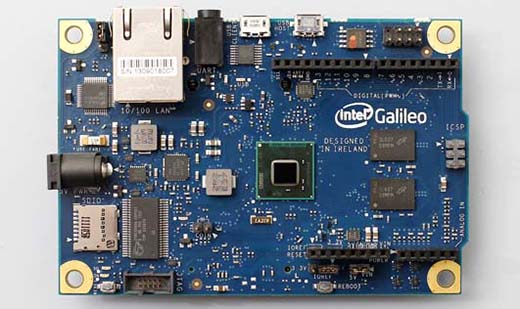You’ve built a brand new project, and it’s a wonderful little thing that’s out and about in the world. The only problem is, you need to know its location to a decent degree of accuracy. Thankfully, GPS is a thing! With an off-the-shelf module, it’s possible to get all the location data you could possibly need. But how do you go about it, and what parts are the right ones for your application? For the answers to these questions, read on! Continue reading “How To Choose The Right GPS Module For Your Project”
Galileo7 Articles
Not Just GPS: New Options For Global Positioning
A few weeks ago, China launched the final satellite in its BeiDou-3 satellite positioning system. Didn’t know that China had its own GPS? How about Europe’s Galileo, Russia’s GLONASS, or Japan’s QZSS? There’s a whole world of GPS-alikes out there. Let’s take a look.
Continue reading “Not Just GPS: New Options For Global Positioning”
Inside The Mysterious Global Navigation Outage You Probably Didn’t Notice
The entire world has come to depend on satellite navigation systems in the forty or so years since the first Global Positioning System satellites took to orbit. Modern economies have been built on the presumption that people and assets can be located to within a meter or better anywhere on, above, or even slightly under the surface of the planet. For years, GPS was the only way to do that, but billions have been sunk into fielding other global navigation systems, achieving a measure of independence from GPS and to putting in place some badly needed redundancy in case of outages, like that suffered by the European Union’s Galileo system recently.
The problem with Galileo, the high-accuracy public access location system that’s optimized for higher latitudes, seems to be resolved as of this writing. The EU has been tight-lipped about the outage, however, leaving investigation into its root cause to a few clever hackers armed with SDRs and comprehensive knowledge of exactly how a constellation of satellites can use the principles of both general and special relativity to point you to your nearest Starbucks.
Continue reading “Inside The Mysterious Global Navigation Outage You Probably Didn’t Notice”
Britain Rejoins The Space Race

In a completely unexpected move, the British Prime Minister Theresa May yesterday announced outside Number 10 Downing Street that the UK would resume its space launch programme, 47 years after its cancellation following the launch of the Prospero satellite. She outlined a bold plan with a target of placing the Doc Martens of a British astronaut on the Lunar surface as early as 2024. Funded by the £350m per week Brexit windfall, the move would she said place the country at the forefront of a new 21st century Space Race with the North Koreans.
An estimated 2 million jubilant supporters took to the streets of London at the news, bringing the capital to a halt as they paraded with colourful banners from Hyde Park to Trafalgar Square and down Whitehall past her Downing Street home. Meanwhile the value of shares in the popular British high street bakery firm Patisserie Gregoire jumped by 19% as it was revealed that their new vegan sausage roll had in fact been a secret trial of the British astronaut diet. Continue reading “Britain Rejoins The Space Race”
Engineering For The Long Haul, The NASA Way
The popular press was recently abuzz with sad news from the planet Mars: Opportunity, the little rover that could, could do no more. It took an astonishing 15 years for it to give up the ghost, and it took a planet-wide dust storm that blotted out the sun and plunged the rover into apocalyptically dark and cold conditions to finally kill the machine. It lived 37 times longer than its 90-sol design life, producing mountains of data that will take another 15 years or more to fully digest.
Entire careers were unexpectedly built around Opportunity – officially but bloodlessly dubbed “Mars Exploration Rover-B”, or MER-B – as it stubbornly extended its mission and overcame obstacles both figurative and literal. But “Oppy” is far from the only long-duration success that NASA can boast about. Now that Opportunity has sent its last data, it seems only fitting to celebrate the achievement with a look at exactly how machines and missions can survive and thrive so long in the harshest possible conditions.
Continue reading “Engineering For The Long Haul, The NASA Way”
Arduino TinyGPS Updated To Support GLONASS
GPS is a global technology these days, with the Russian GLONASS system and the forthcoming European Galileo orbiting alongside the original US GPS satellites above our heads. [Florin Duroiu] decided to embrace globalism by forking the TinyGPS library for the Arduino platform to add support for these satellite constellations.
In addition to the GLONASS support, the new version of the venerable TinyGPS adds some neat new features by incorporating the NMEA 3.0 standard (warning: big-ass PDF link). Using this, you can extract interesting stuff such as the calculated position from each satellite constellation, the signal strength of each satellite and a lot more technical stuff about what the satellites are saying about you to your GPS receiver. [Florin] claims it is a drop-in replacement for TinyGPS that should require no rewriting. There is no support for Galileo just yet (as the satellites are still being launched: eight are in orbit now), but [Florin] is looking for help to add this, as well as the new Chinese BEIDOU system once it is operational.
(top image: artists’ view of a Galileo satellite in orbit, courtesy of ESA)
The Intel-powered Arduino
Dev boards based on microcontrollers and ARM System on Chips are everywhere, but finding a small pocketable computer based on an Intel processor has been difficult to find. [Massimo] of Arduino just unveiled a new Intel architecture Arduino-compatible board at the Rome Maker Faire. It’s called the Galileo, and it has everything you’d expect from a juiced-up Arduino running x86.
The main chip is an Intel Quark SoC running at 400MHz with 256 MB of DRAM. On board is a Mini-PCIe slot, 100Mb Ethernet port, Micro SD slot, RS-232, and USB host and client ports. Here’s the datasheet for the Galileo with all the applicable information.
The Galileo can be programmed with the standard Arduino IDE, but from the getting started guide, it looks like this board is running Yocto, a stripped down Linux for embedded environments.
Realistically, what we have here is a board with about the same processing power as a Raspberry Pi, but with Arduino compatibility, and a Mini PCIe port for some really fun stuff. It will be interesting to see what can be made with this board, but if you have any ideas on what to do with a Galileo before it’s released in two months, drop a note in the comments.


















